In the distant 16th century, Chingi-Tura, the capital of the Siberian Khanate, was on the site of Tyumen. Today, a modern and developed city stands here - one of the industrial and cultural centers of the region. In Tyumen, areas consisting of dilapidated houses and dilapidated buildings are not striking, although, of course, they are here. On the contrary, the city gives the impression of having just been built, as if descended from an exemplary picture.
Historical sights will not disappoint either - several cathedrals of the 17th-18th centuries, monasteries and estates are the legacy of a bygone era. The true pearl of the urban landscape is the embankment, where every tourist first of all goes for a walk to admire the unusual architectural solutions.
What to see and where to go in Tyumen?
The most interesting and beautiful places for walking. Photos and a short description.
- Embankment of the river Tura
- Bridge of lovers
- Tsvetnoy boulevard
- Square of Siberian cats
- Central square
- Museum-Estate of the Kolokolnikovs
- Museum Masharov's House
- Church of the Savior
- Holy Trinity Monastery
- Cathedral of the Sign
- Tyumen Drama Theatre
- Tyumen Philharmonic
- Tyumen Puppet Theater
- Art Museum
- Museum of local lore City Duma
- Tyumen circus
- The building of the State Agricultural Academy
- Historical square
- Alexander (Country) garden
- Thermal springs
Embankment of the river Tura
The improvement of the embankment was carried out as part of a reconstruction project and has become one of the largest projects in recent years. Dozens of sculptors, architects and artists worked on the appearance of the main walking area of the city. As a result, they created a 4-level space connected by stairs, ramps and passages, which has no analogues in Russia. The total length of the embankment is about 4 km, the height is 24 meters.

"Bridge of lovers"
Pedestrian bridge across the Tura River, built in 1987 on the site of an old wooden structure that collapsed due to dilapidation. In 2003, a competition for the longest kiss was organized here. After him, the city authorities were offered to rename the place to the "Bridge of Lovers." After a major overhaul in 2016-2017, the crossing began to look even more modern, being equipped with new lighting equipment.

Tsvetnoy boulevard
Pedestrian promenade 800 meters long, located between Ordzhonikidze and Pervomaiskaya streets. In summer, it is always crowded here - residents come for walks, take part in holidays and watch concerts, in winter an ice town is organized on the territory of the boulevard. Along the street there are cafes, shopping centers, a cinema, a sports complex and a circus. On one of the squares there is a fountain "Four Seasons" with a picturesque stained-glass dome.

Square of Siberian cats
Until 2008, the square was an ordinary nameless alley, until many cast-iron figures of cats were installed here, choosing stone pedestals and lanterns. They decided to perpetuate the fluffy animals in the people's memory - during the blockade of Leningrad, about 5 thousand tailed rats were sent to the besieged city to catch rats spoiling grain stocks. Specifically, more than 230 cats left Tyumen for the northern capital.
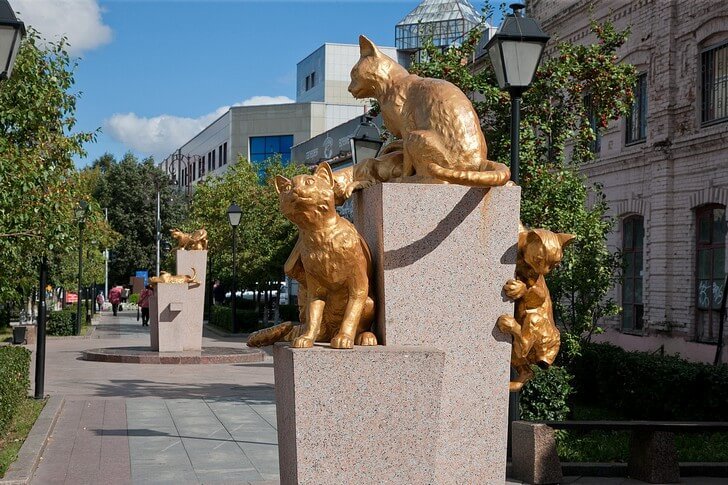
central square
The square arose in the 19th century, when the authorities decided to move trade here from all city markets. Initially, it was called Market. A little later, private houses began to be built along the perimeter, a circus and a chapel (demolished in Soviet times) were also built. In the 20th century, the space of the square was expanded and several more objects were erected on it as part of the program to create the central part of Tyumen.
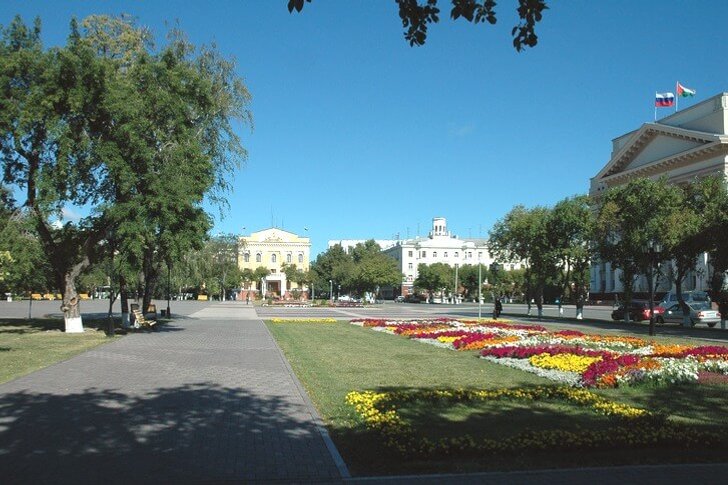
Museum-Estate of the Kolokolnikovs
The only surviving merchant estate in Tyumen, built in the first half of the 19th century. The first floor of the building, which decently settled over time, was built of stone, the second - of wood, according to the tradition of that era. Architraves decorated with carvings appeared a little later, when the merchant Kolokolnikov bought the building. In 1837, the future Emperor Alexander II stayed on the territory of the house.

Museum "Masharov's House"
The museum is located on the territory of a neoclassical mansion of the beginning of the last century, which until 1917 belonged to the Tyumen industrialist N. D. Masharov. After nationalization until 1991, the house was a children's institution. After the transfer of the building to the museum of local lore, the mansion organized an exhibition hall for temporary exhibitions and a small permanent collection "Family Album", dedicated to the urban life of the 19th century.
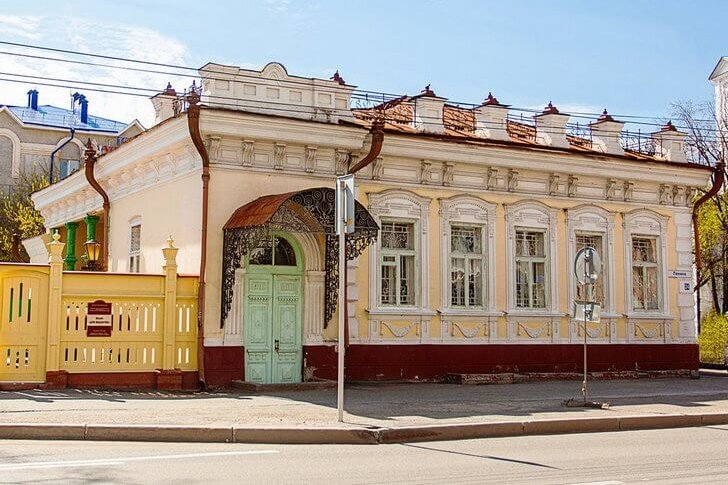
Church of the Savior
The first mention of the temple dates back to the 17th century - at that time a wooden church stood on the site of the modern stone one. The building combines elements of the Siberian baroque style and pseudo-Russian style, which stood out in appearance after several reconstructions. The Church of the Savior is one of the most significant architectural monuments in Siberia. At the moment, the temple is not operating; the funds of one of the city museums are stored on its territory.

Holy Trinity Monastery
The current Orthodox monastery, one of the oldest in Siberia. The year of foundation is considered to be 1616, when the monk Nifont settled here. The first wooden church was built six years later, but in 1705 it burned down, after which it was restored from stone. In Soviet times, due to the fact that the ensemble was declared an architectural monument, it managed to avoid complete destruction - two churches have survived to this day.
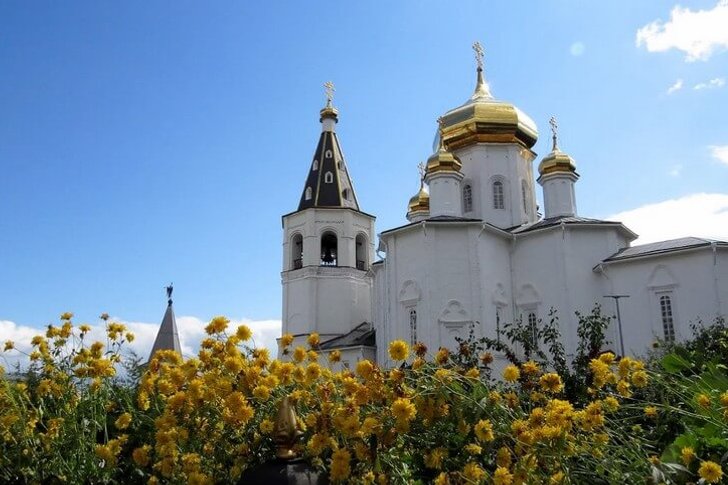
Cathedral of the Sign
The stone building of the cathedral was built in 1801; before that, two wooden churches burned down in its place. During the 19th century, it was repeatedly repaired and rebuilt; in Soviet times, after the confiscation of property, the club of athletes was first placed on the territory, and then a prison for exiles and a tractor station. The cathedral was returned to believers in 1945.
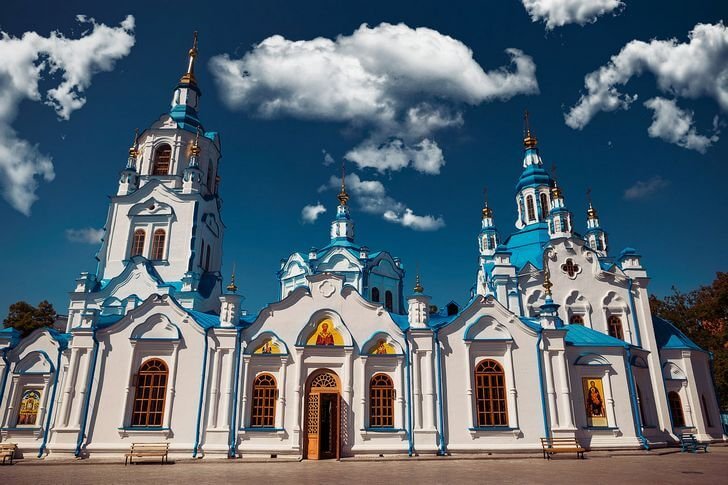
Tyumen Drama Theatre
The Tyumen drama stage was founded in the middle of the 19th century and today it is the largest in Russia. The modern building was built in 2008 in a monumental classical style: the facade was decorated with columns and a portico, statues and stucco, trying to give the building the features of a beautiful era as much as possible. Performances are held in two halls - large and small. The repertoire includes performances for children.
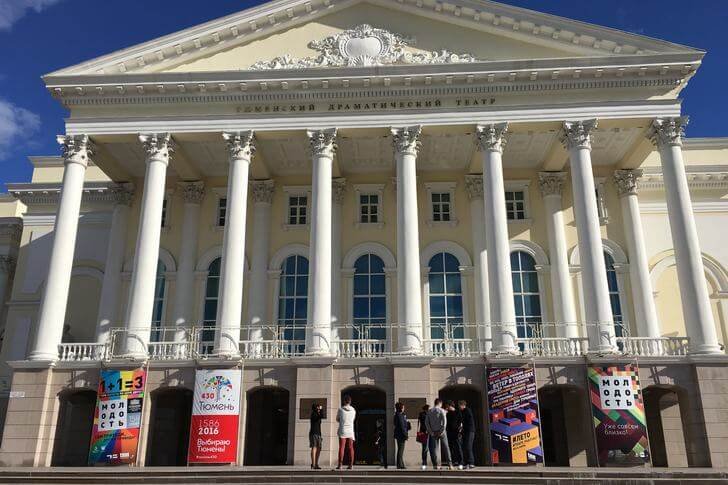
Tyumen Philharmonic
The concert hall appeared in Tyumen in 1958. For decades, musicians have not only performed at their home venues, but also actively engaged in educational activities, visiting regional cities, educational institutions and factories. The building was erected in 1967, after which the well-known throughout the country began to come to the Philharmonic. During the reconstruction of the 2000s, the interior space was significantly expanded, increasing the capacity of the auditorium.

Tyumen Puppet Theater
The puppet theater arose thanks to the initiative of the dramatic actress E. S. Stivina in 1945. Since the 1960s, the team has taken part in international festivals. The modern building was erected in the 1970s in a typical Soviet style - only functionality, nothing superfluous, let alone "useless" decorative elements. The repertoire of the theater includes puppet shows for adults and children.
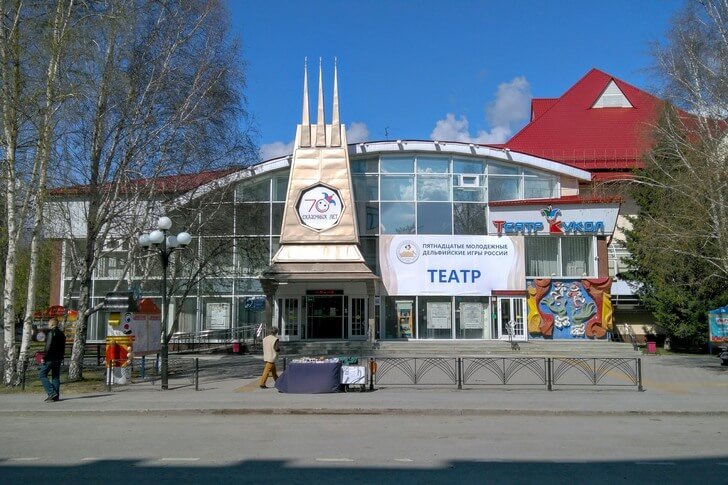
Art Museum
The Tyumen Art Gallery has been repeatedly recognized as one of the most significant collections of the Russian provinces due to its valuable collection of paintings and objects of applied art belonging to the time period of the 17th-20th centuries. The museum has paintings by famous Russian artists (Aivazovsky, Repin, Serebryakov) and works by Western European masters. The collection is complemented by icons and items from the Imperial Porcelain Factory.
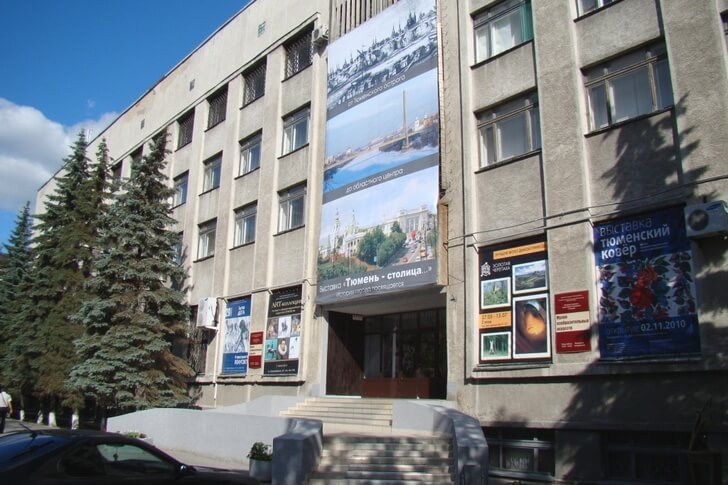
Museum of local lore "City Duma"
The museum collection is located on the territory of a classical building of the second half of the 19th century, which is a vivid example of provincial town planning. The permanent exposition "Window to Nature" deserves attention, where the whole diversity of flora and fauna of the Tyumen region is presented. Here you can see the whole skeletons of a mammoth, a bison, a cave bear and a woolly rhinoceros.

Tyumen circus
In the 19th century, street gymnasts began to perform in Tyumen - they can be considered the first circus artists. Improvised platforms were located in temporary tents, as befits a real big top. The first permanent building appeared in 1897, thanks to which the performances began to be held in the winter. The modern building was built in the 2000s to replace the old building from the 1930s.

The building of the State Agricultural Academy
Previously, the building of the Agricultural Academy housed the Alexander Real School, where they taught practical and sought-after professions. The two-storey manor was erected at the end of the 19th century according to the project of an architect invited from St. Petersburg. It is a classic mansion with a distinguished main facade and outbuildings, decorated with stucco decorative elements.

historical square
The square is located next to the very place where the settlers built the first wooden fortress. Its architectural appearance has changed several times, it acquired its modern look in the 1960-80s. Today, the main objects of the square can be considered a monument in honor of those who died in the Great Patriotic War, made in the form of a 28-meter stele, and the Eternal Flame. In 1992, a memorial cross was erected here in honor of the conqueror of Siberia, Yermak.
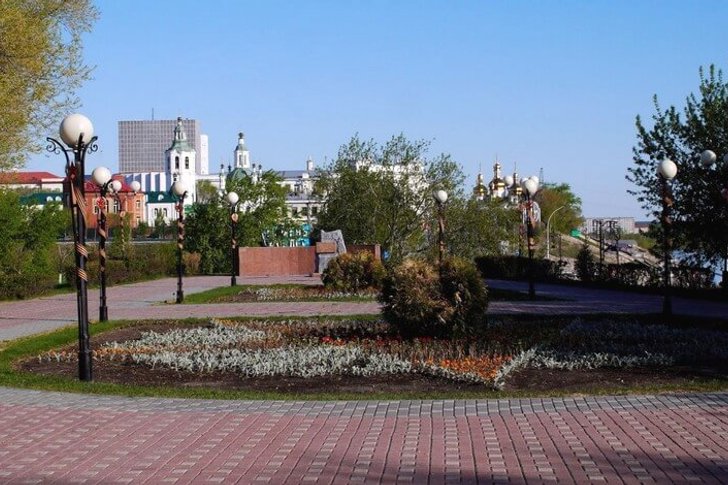
Alexander (Country) garden
City park, founded in 1851 at the expense of the merchant I. Ikonnikov. It was named in honor of Tsarevich Alexander, who honored the city with his visit in 1837. The future emperor planted one of the trees with his own hands, the second (cedar) was planted by his son a little later, but they have not survived to this day. During the period 1917–48, the garden was abandoned, but workers restored it. The second period of desolation continued until the 2000s. In 2007, the territory was revived, reducing it by about 10 times.
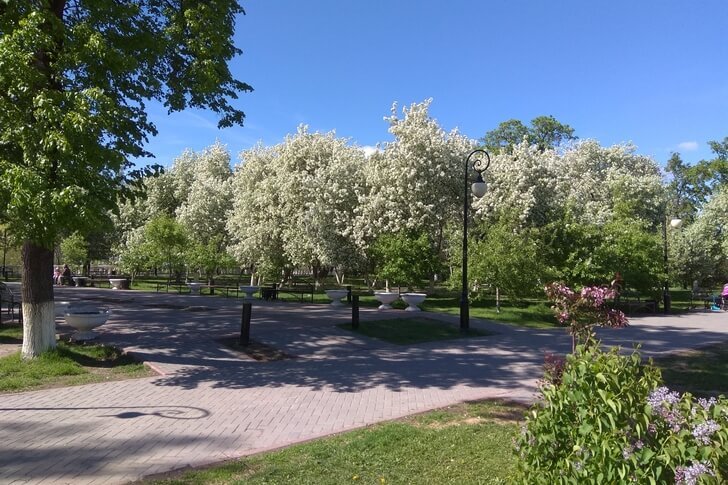
thermal springs
There are several thermal springs in the vicinity of Tyumen, the nearest one is at a distance of 10 km from the city on the territory of the Verkhny Bor recreation center. All bathing places are landscaped and equipped. It is quite unusual to watch when locals and visitors splash in hot waters with temperatures up to 45 ° C in the harsh Siberian frost among snowdrifts. The water in the Tyumen springs contains many useful substances for the body.
